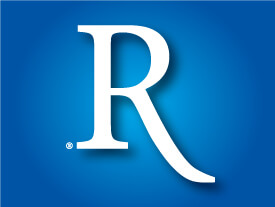Fake News by John Stossel
"Fake News!" shouts our president, calling out CNN, The New York Times and others.

"Fake News!" shouts our president, calling out CNN, The New York Times and others.

President Trump is lashing out against “fake news” in what is quite possibly the greatest civics-journalism course ever publicly taught in America.

Former Fort Worth, Texas, police officer Brian Franklin is finally free. But he is still fighting to clear his name.

Among the reasons Donald Trump is president is that he read the nation and the world better than his rivals.

When Gen. Michael Flynn was forced to resign as national security adviser, Bill Kristol purred his satisfaction, "If it comes to it, prefer the deep state to the Trump state."

Amid the turmoil of the first month of the Trump administration, with courts blocking his temporary travel ban and his national security adviser resigning after 24 days, the solid partisan divisions in the electorate -- modestly changed in 2016 from what they'd been over the previous two decades -- remain in place.

In a whirling dervish White House press conference, President Trump manhandled the press, piledrived all the fake news and reminded the world why he tore through both political parties and got elected president in the first place.

At first blush, one might think that the Democrats have a decent chance of taking control of the Senate in the 2018 midterm. After all, midterms frequently break against the president’s party, which has lost an average of four seats in the 26 midterms conducted in the era of popular Senate elections (starting with the 1914 midterm).

The resignation of national security advisor Michael Flynn has the anti-Trump media declaring the new administration a "mess," in "turmoil" and thrown into "chaos."

Republicans promised to repeal the Affordable Care Act. But now they are hesitating.

Mike Flynn was right to quit. You don’t lie to the vice president of the United States and let him go out on national television and lie to the American people.

On the very day President Donald Trump's incentive-based tax and regulatory policies are put in place, former President Barack Obama's war on business will have officially come to an end. No longer will American companies be punished by uncompetitive rates of taxation and unnecessary rules and regulations.

To those who lived through that era that tore us apart in the '60s and '70s, it is starting to look like "deja vu all over again."

The Clash asked once, and now I am too: Should I stay or should I go?

Amid all the hurly-burly of President Donald Trump's first weeks in office, let's try to put the changes he's making and the feathers he's ruffling in a longer, 20-year perspective. Start off with his trademark issue -- one that clearly helped him win the 64 crucial electoral votes of Pennsylvania, Ohio, Michigan and Wisconsin: trade.

Democrats should be very, very careful what they wish for.

"Disheartening and demoralizing," wailed Judge Neil Gorsuch of President Trump's comments about the judges seeking to overturn his 90-day ban on travel to the U.S. from the Greater Middle East war zones.

It’s become far less common in recent years for voters to vote for one party for president and another for their local U.S. House seat. While the number of “crossover” districts did go up from 2012 — there are 35 of them, as opposed to 26 after the 2012 election — the percentage of crossover seats, just 8% of the 435 districts, is low historically. To put that in perspective, 40 years ago during the 1976 presidential election — a race that, like this one, saw a national popular vote difference between the two candidates of just about two percentage points — 28.5% of the seats (124 of 435) voted differently for president and for House.

All that was missing from Hillary Clinton's video address to a left-wing women's group this week was a pink pussyhat and a "BOYS SUCK" T-shirt.

Oh, no! I did it again.
It was a foolish mistake. But I slipped.
I read The New York Times.